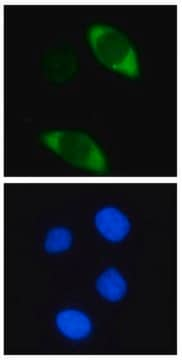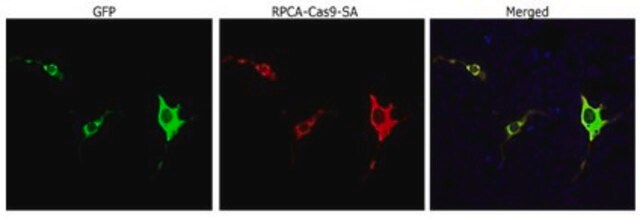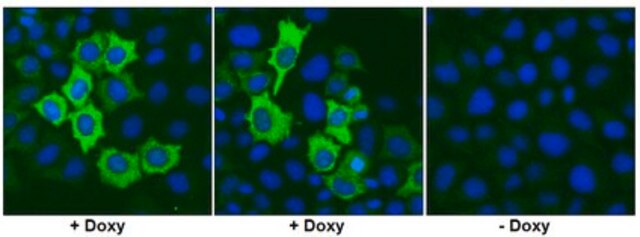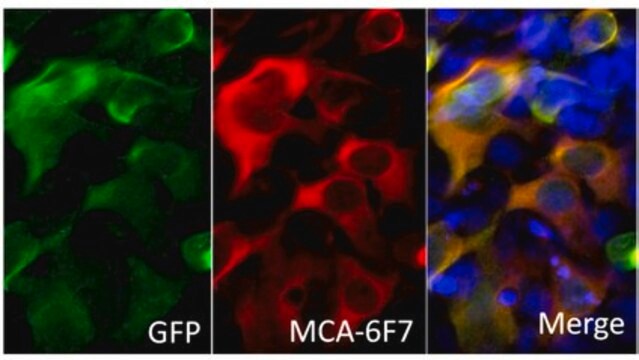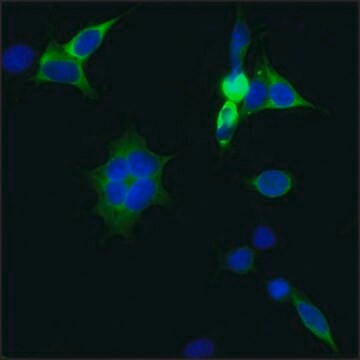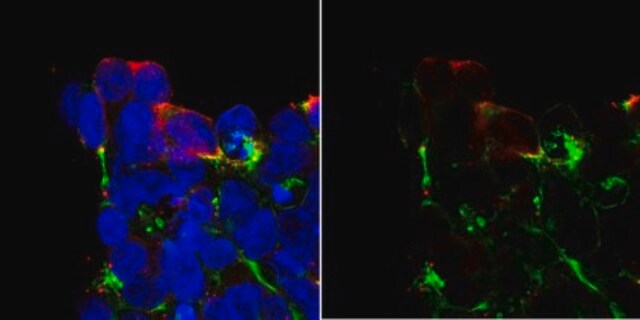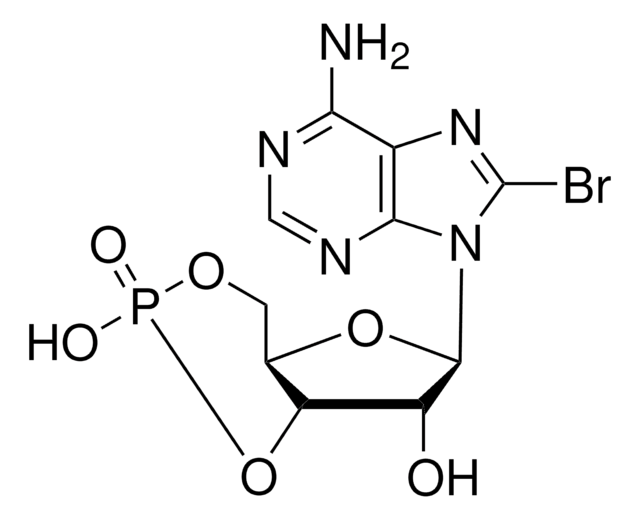Wichtige Dokumente
SAB4200751
Anti-CRISPR/Cas9 (C-terminal) antibody, Mouse monoclonal
clone 10C11-A12, purified from hybridoma cell culture
Synonym(e):
Anti-CRISPR-associated protein-9 nuclease, Anti-Crispr, Anti-Crsipr RNA
About This Item
Empfohlene Produkte
Antikörperform
purified from hybridoma cell culture
Qualitätsniveau
Antikörper-Produkttyp
primary antibodies
Klon
10C11-A12, monoclonal
Form
buffered aqueous solution
Konzentration
~1.00 mg/mL
Methode(n)
immunoblotting: 1-2 μg/mL using whole extracts of human HEK-293T cells over-expressing CAS9 protein
immunofluorescence: 1.25-2.5 μg/mL using human HEK-293T cells over-expressing CAS9 protein
immunoprecipitation (IP): 5-10 μg/test using whole extract of human HEK-293T cells over-expressing CAS9 protein
UniProt-Hinterlegungsnummer
Versandbedingung
dry ice
Lagertemp.
−20°C
Posttranslationale Modifikation Target
unmodified
Allgemeine Beschreibung
The Cas9 endonuclease can be engineered with a single gRNA, directing a DNA double-strand break (DSB) at a desired genomic location. Similar to DSBs induced by zinc finger nucleases (ZFNs), the cell then activates endogenous DNA repair processes, either non-homologous end joining (NHEJ) or homology-directed repair (HDR), to heal the targeted DSB.
In comparison to other genome-editing technologies such as designer zinc fingers (ZFs), transcription activator–like effectors (TALEs) and homing meganucleases, the CRISPR/CAS9 system is a scalable, affordable and easy to engineer. Therefore, the anti-CRISPR/CAS9 antibody can be a useful tool for detecting CRISPR/CAS9 positively transfected cells, revealing DSB sites in the genome and in ChIP (Chromatin Immunoprecipitation) related assays
Immunogen
Anwendung
Biochem./physiol. Wirkung
Physikalische Form
Lagerung und Haltbarkeit
Sonstige Hinweise
In order to obtain best results in different techniques and preparations we recommend determining optimal working concentration by titration test.
Sie haben nicht das passende Produkt gefunden?
Probieren Sie unser Produkt-Auswahlhilfe. aus.
Lagerklassenschlüssel
10 - Combustible liquids
Flammpunkt (°F)
Not applicable
Flammpunkt (°C)
Not applicable
Hier finden Sie alle aktuellen Versionen:
Analysenzertifikate (COA)
Die passende Version wird nicht angezeigt?
Wenn Sie eine bestimmte Version benötigen, können Sie anhand der Lot- oder Chargennummer nach einem spezifischen Zertifikat suchen.
Besitzen Sie dieses Produkt bereits?
In der Dokumentenbibliothek finden Sie die Dokumentation zu den Produkten, die Sie kürzlich erworben haben.
Kunden haben sich ebenfalls angesehen
Unser Team von Wissenschaftlern verfügt über Erfahrung in allen Forschungsbereichen einschließlich Life Science, Materialwissenschaften, chemischer Synthese, Chromatographie, Analytik und vielen mehr..
Setzen Sie sich mit dem technischen Dienst in Verbindung.


